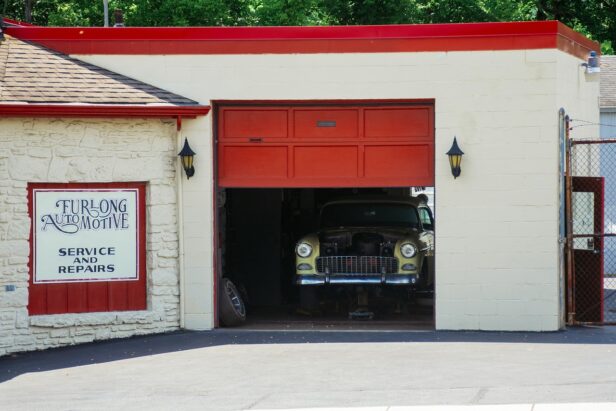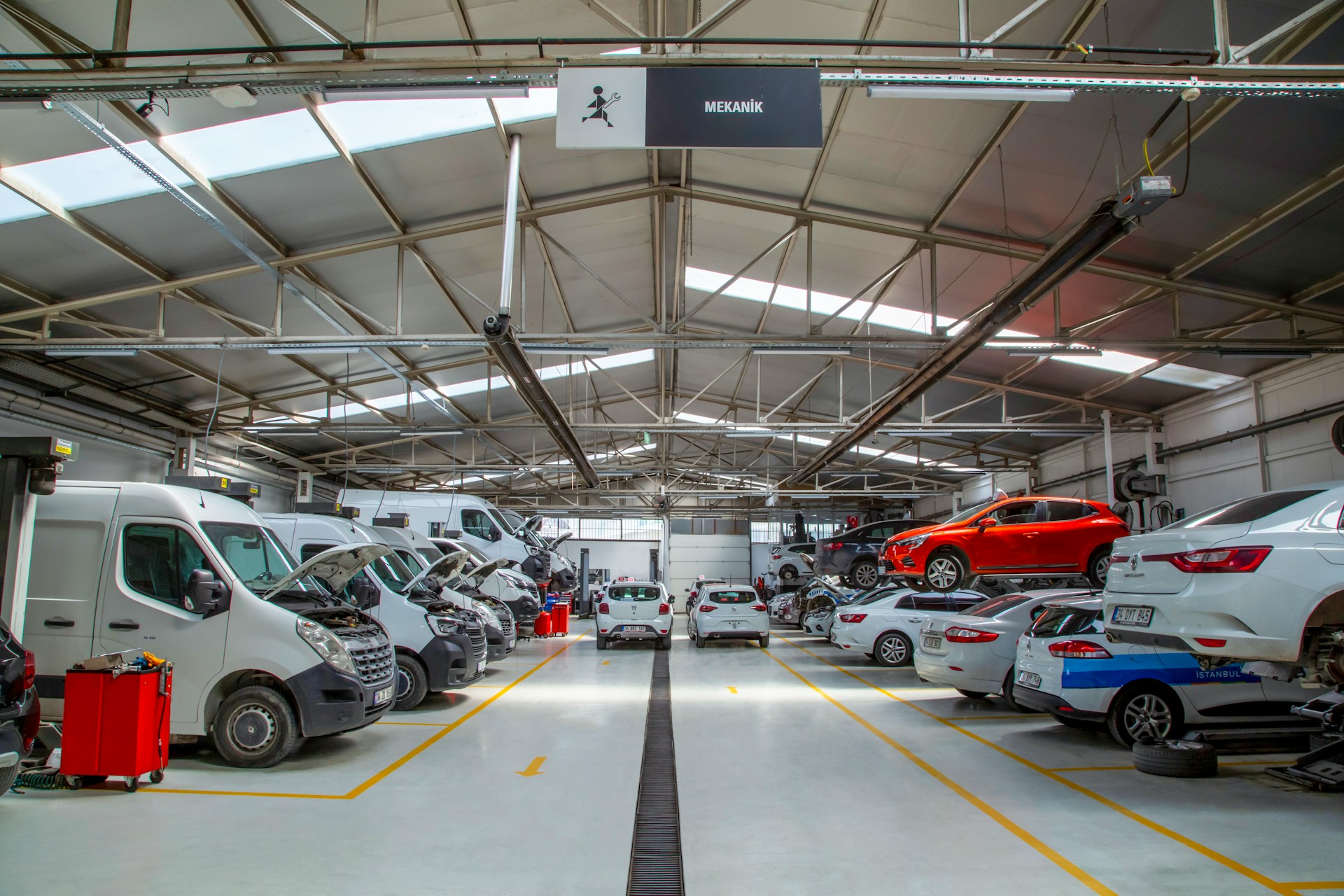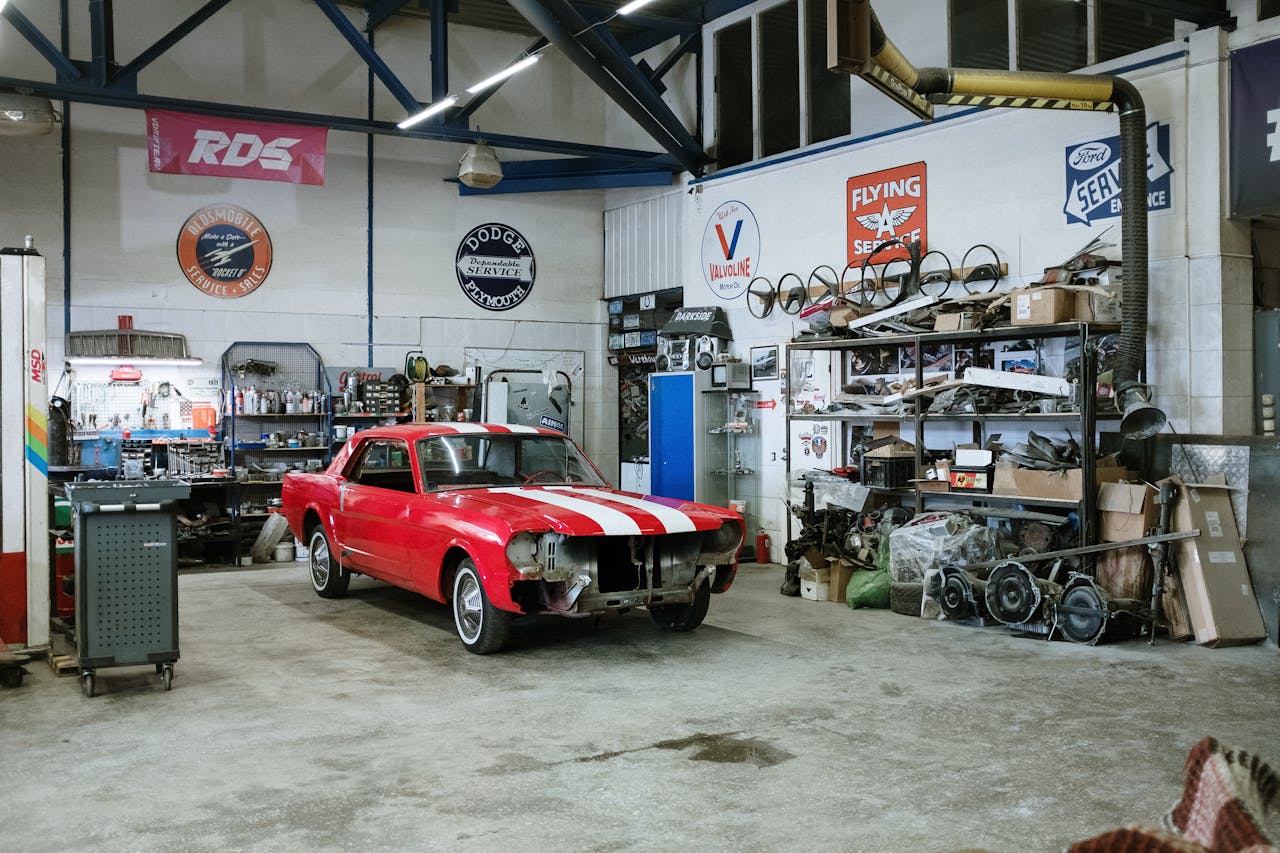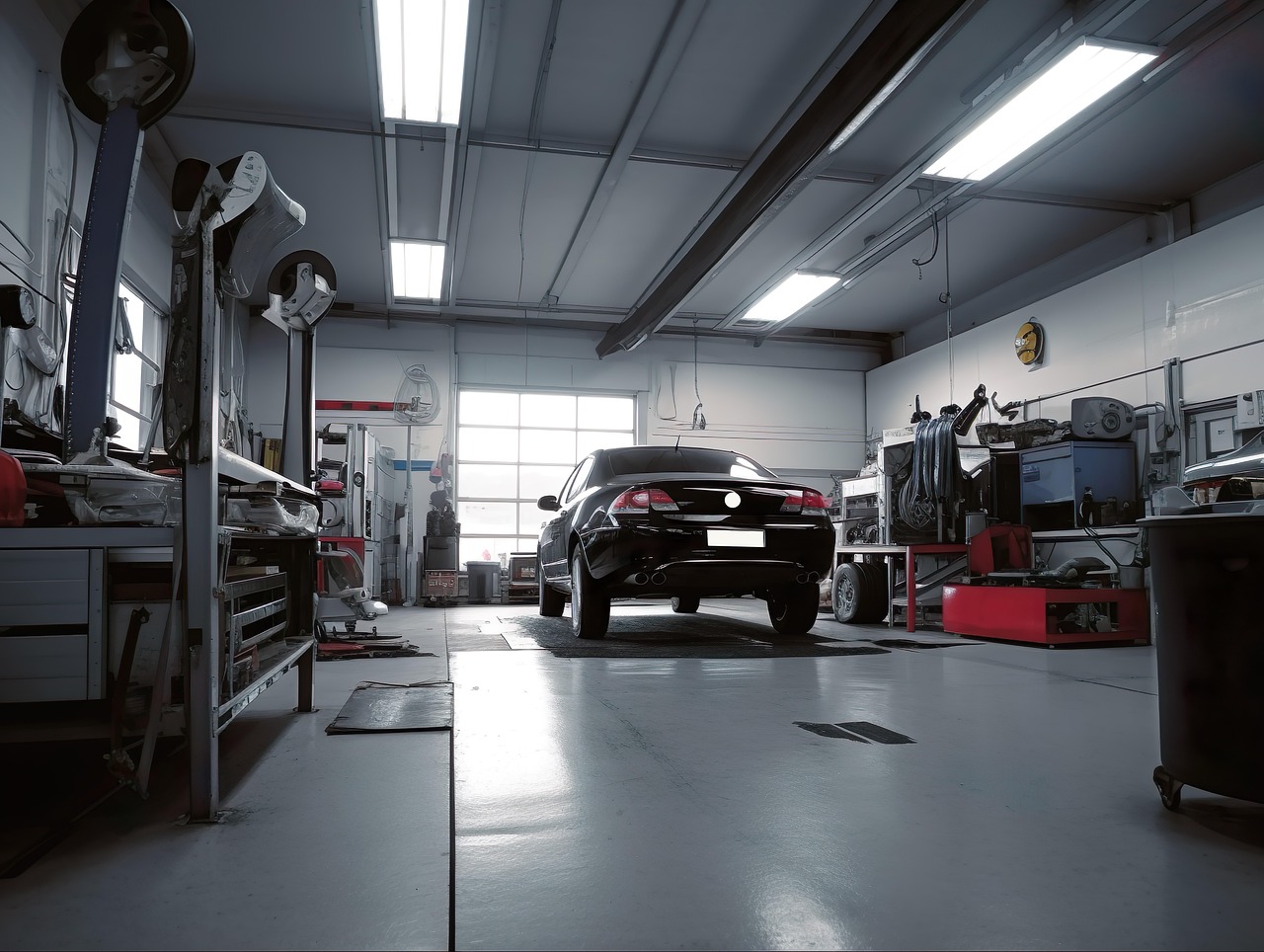Safety violations in vehicle repair facilities can shut down operations and trigger costly remediation. Houston’s auto repair shop ventilation requirements establish clear performance standards for air quality, hazardous area management, and regulatory compliance across the city’s repair garage network.
We coordinate ventilation systems that meet Houston Permitting Center mechanical code standards while addressing Texas Commission on Environmental Quality air regulations. The Houston-Galveston ozone nonattainment area adds state-level requirements for emissions tracking and pollution control that affect how we design and operate repair facility ventilation systems.
What Ventilation Rates And Hazardous-Area Rules Apply In Repair Garages?
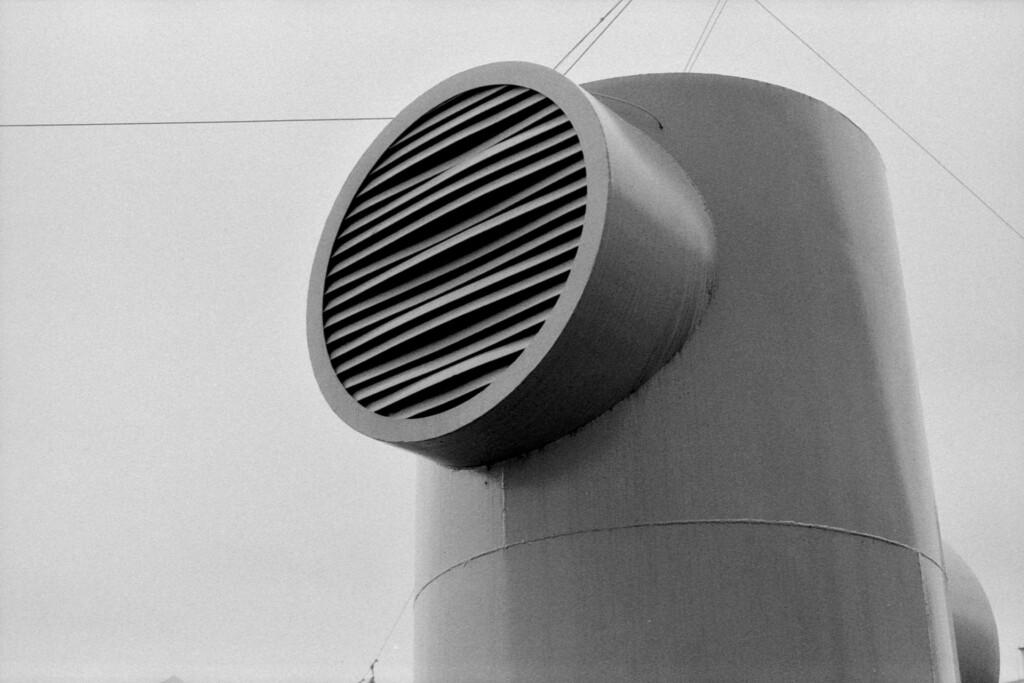
Repair garage ventilation requirements establish specific airflow rates and hazardous area designations based on the types of vehicles serviced and work performed. These requirements directly impact how we design and install mechanical systems to maintain safe working conditions.
Minimum Ventilation Requirements
The 0.75 cfm/sf minimum ventilation rate applies to all vehicle repair shops under IMC Section 502, regardless of fuel type. We maintain continuous ventilation during occupied hours to meet this baseline requirement.
This rate serves as the foundation for all repair garage ventilation systems. When we design systems that exceed this minimum to address classified areas, the higher rates take precedence while still satisfying the base code requirement.
Floor Classification And Declassification
In major repair garages, the area up to 18 inches above the finished floor becomes a classified location under NEC Article 511. We can remove this classification by providing 4 ACH mechanical ventilation with strategically placed air distribution points.
The exhaust and makeup air systems must position outlets within 12 inches of the floor to effectively address floor classification 18 inches above grade. This placement ensures adequate air mixing and gas dilution at the critical zone where heavier vapors may accumulate.
Adjacent areas remain unclassified when we maintain them at positive pressure relative to classified spaces or install appropriate separation barriers. This approach allows flexibility in facility layout and equipment placement.
Ceiling Areas For CNG And Hydrogen Vehicles
When repairing or storing CNG vehicles, ceilings become classified up to 18 inches below the highest point. We address ceiling classification 18 inches by providing 1 cfm/sf ventilation with exhaust located in the top 18 inches of the space.
This requirement recognizes that compressed natural gas and hydrogen rise to ceiling areas due to their lighter-than-air properties. The exhaust placement within the top 18 inches captures these gases before they can accumulate to dangerous concentrations.
For facilities with complex roof structures or architectural features that could create gas pockets, we evaluate air circulation patterns to ensure effective ventilation reaches all ceiling areas within the classified zone.
Gas Detection Systems For Non-Odorized Gases
Repair facilities handling non-odorized gases like hydrogen and non-odorized LNG/CNG require approved flammable gas detection systems. These systems activate at 25 percent of the lower flammable limit and trigger ventilation equipment.
We can use intermittent ventilation rather than continuous ventilation when gas detectors control the system operation. This approach allows energy savings during normal operations while providing immediate response when gas detection occurs.
The detection system integration includes automatic startup of exhaust fans, opening of makeup air dampers, and shutdown of heating equipment to eliminate potential ignition sources during gas release events.
Welding And Hot Work Restrictions
The IFC limits gas and arc welding in repair shops due to ignition risks. When welding operations are necessary, we designate specific bays or sub-spaces with enhanced ventilation or separation measures.
These designated welding areas receive the same 4 ACH ventilation or positive pressure differential used for declassifying floor areas. Physical separation using fire-rated partitions provides an alternative approach for facilities where enhanced ventilation is not practical.
We coordinate welding area design with fire protection systems and ensure compliance with both IFC welding requirements and repair garage ventilation codes.
Heating Equipment Installation
Gas-fired unit heaters remain permissible in repair garages when installed according to NFPA 30A height and temperature requirements. We position heating equipment to avoid areas subject to ignitable gas concentrations.
Surface temperatures above 750°F are prohibited in areas where gas accumulation could occur. This restriction applies to both permanently installed heating equipment and portable heating devices used during maintenance operations.
We evaluate existing heating systems during retrofit projects to determine compliance with current codes and recommend modifications when surface temperature limits or installation heights do not meet NFPA 30A requirements.
How Do Houston Permits And Inspections Work For Commercial Ventilation?
Getting the proper Houston ventilation permit requires specific steps and timing that we coordinate carefully on every project. The city has streamlined the process through electronic systems, but contractors must follow registration requirements and fee structures that affect project schedules.
License Registration Requirements
Before we can apply for any mechanical permit in Houston, our contractors must register with the City of Houston using the CE-1308 process. This registration puts the contractor’s license in the city’s system and enables permit applications. We ensure our mechanical contractors complete this step early since no permits can be issued without proper registration.
The registration requires specific documentation listed in the CE-1308 form. We maintain current registrations for all our trade partners to avoid delays when ventilation permits are needed.
Online Application Process
Houston requires mechanical permits to be submitted through the iPermits portal. We create user accounts for project-specific access and complete the mechanical permit application electronically. The system guides users through required fields including project scope, contractor information, and cost estimates.
After completing the application, we pay the associated fees online and print the permit immediately. The electronic system processes most permits within one hour, though complex projects may require additional review time.
Plan Review And ProjectDox Upload
Depending on the ventilation scope, plan review may be required for the project. When plan review is necessary, the system sends an invitation to upload drawings and specifications into ProjectDox after we pay the permit fees. We upload all required documents and mark assigned tasks as complete to finalize the plan submission.
The ProjectDox system manages file organization through predefined folders for different trades and document types. We follow the city’s file naming conventions and upload requirements to ensure smooth plan review processing.
Fee Structure And Permit Validity
Houston charges 2% of the total job cost plus $46.35 for ventilation permits, with an additional $33.10 administrative fee. We calculate these costs during project planning since they affect overall budgets. The permits remain valid for 180 days from issuance, which gives adequate time for most ventilation installations.
Processing times average one hour for standard applications, though projects requiring plan review take longer. We factor these timelines into construction schedules to avoid delays.
Inspection Scheduling And Requirements
During construction, we keep the printed permit and any approved plans on-site for inspection access. Houston’s Mechanical Inspections department requires scheduling through their online system. We schedule inspections as work progresses to maintain project momentum.
The contractor’s license registration must remain in good standing throughout the project. We verify that any permit holds are cleared before requesting inspections. Projects that repeatedly fail inspections may face re-inspection fees in addition to standard administrative costs, so we coordinate with our trades to ensure work meets code requirements before scheduling.
Which Texas Air Rules Affect Shop Ventilation Design And Operation?
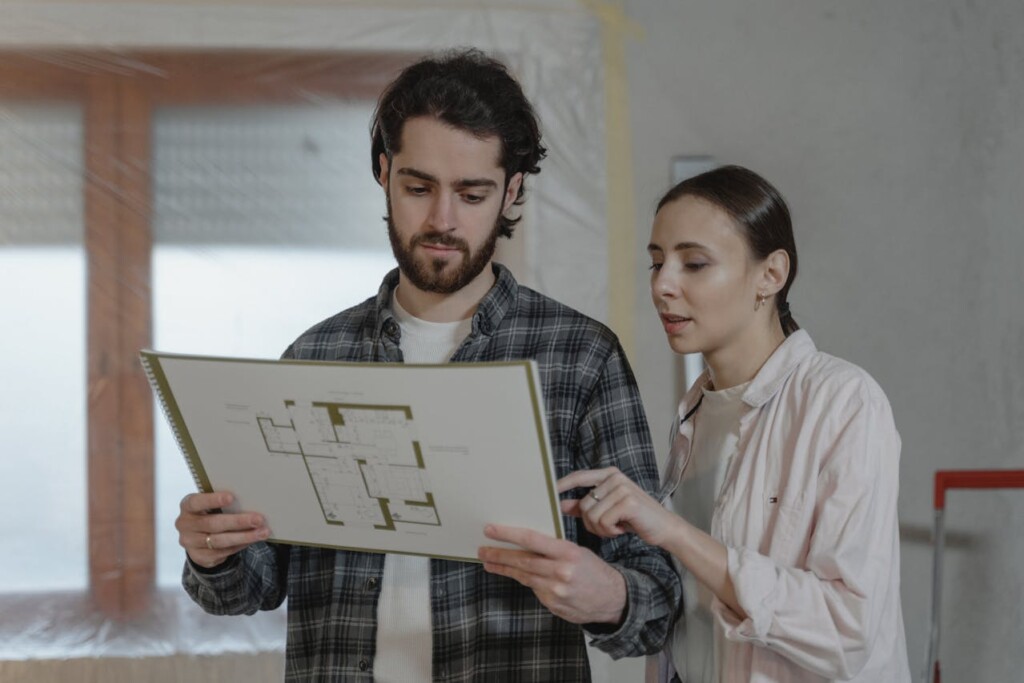
Texas air quality regulations determine authorization requirements before we design and install shop ventilation systems. The Texas Commission on Environmental Quality (TCEQ) requires facilities that generate air contaminants to obtain proper authorization before construction or modification begins.
TCEQ Authorization Categories
Three primary pathways exist for air authorization in Texas. De minimis facilities meet specific material use limits under 30 Texas Administrative Code Section 116.119 and require no additional registration.
Permit by Rule authorizations apply to operations emitting less than 250 tons per year of carbon monoxide or nitrogen oxides, or 25 tons per year of volatile organic compounds. State Air Quality Permits handle larger facilities that exceed these thresholds.
Common Permit By Rule Applications For Repair Shops
Multiple PBR categories directly impact repair shop operations. Parts washers qualify under Section 106.454, while handheld processes like spray guns fall under 106.265.
Used oil burners require authorization under 106.181, and heat cleaning devices operate under 106.495. Surface coating activities must comply with 106.433, and steam cleaning operations follow 106.411 requirements.
Additional categories include acid baths (106.375), fuel dispensing equipment (106.412), soldering and welding operations (106.227), and comfort heating systems (106.102). Each PBR carries specific operational conditions and record keeping requirements that we incorporate into system design.
Nonattainment Area Requirements
The Houston-Galveston area operates under ozone nonattainment status, creating additional compliance obligations. Facilities in these counties face volatile organic compound limits and enhanced reporting requirements.
Shops that dispense gasoline must evaluate Stage I and Stage II vapor recovery requirements. Stage I applies to facilities dispensing more than 10,000 gallons per month in the Houston-Galveston-Brazoria area, while Stage II requirements have been largely decommissioned since 2014.
Emissions Inventory And Operational Standards
Facilities emitting 10 tons per year or more of VOCs must submit annual emissions inventory reports to TCEQ. We design ventilation systems to help shops avoid nuisance emissions and visible emissions violations.
General housekeeping rules require maintaining pollution control equipment in good working order. This includes regular maintenance of ventilation systems, proper waste storage, and documented cleaning procedures.
Documentation And Compliance Tracking
Process or equipment changes can trigger new permit requirements, making accurate record keeping essential. We recommend maintaining purchase receipts, maintenance logs, and operational records to demonstrate compliance during inspections.
Material usage records become particularly important for facilities claiming de minimis status, as investigators can examine these documents without advance notice. Proper documentation supports both initial authorization decisions and ongoing compliance verification.
How Can Detection-Based Control Strategies Support Code Compliance?
Gas detection systems paired with automated ventilation controls create a targeted approach to managing code requirements and classified locations. When properly designed and implemented, we can use sensor-driven control strategies to maintain continuous baseline airflow while responding automatically to hazardous gas concentrations. This approach optimizes system operation while ensuring compliance with mechanical code standards.
Detection-based strategies allow for precise ventilation control by responding to actual conditions rather than assuming worst-case scenarios at all times. The key is integrating approved sensors with control sequences that manage both baseline ventilation and boost conditions based on real-time monitoring.
Establishing Continuous Baseline Ventilation
We maintain at least 0.75 cfm per square foot during occupied hours as the foundation for all detection-based systems. This continuous baseline ensures minimum air exchange requirements are met regardless of sensor status or detected gas levels. The baseline rate operates whenever the facility is occupied, providing general dilution ventilation for routine operations.
During non-occupied hours, systems can reduce to lower rates or cycle intermittently based on timer controls or occupancy sensors. However, occupied periods require the full baseline rate to meet mechanical code minimums. We program control systems to automatically resume baseline operation at the start of each occupied period.
Implementing Sensor-Driven Boost Controls
For facilities handling non-odorized gases like hydrogen or non-odorized LNG and CNG, approved flammable gas detection systems trigger higher exhaust rates when concentrations exceed preset thresholds. These sensors monitor for specific gas types and automatically start boost ventilation upon detection. The boost rate typically increases total exhaust to levels sufficient for rapid dilution and removal.
Intermittent ventilation becomes acceptable when controlled by approved detectors because the system responds immediately to actual hazardous conditions. We position sensors in areas where gas accumulation is most likely, ensuring rapid detection and response. Sensor calibration and testing schedules must align with manufacturer requirements and local inspection protocols.
The automation sequence links detection signals directly to ventilation equipment, bypassing manual intervention for immediate response. Control programming includes fail-safe modes that maintain ventilation if sensor communication is lost.
Strategic Exhaust and Makeup Air Placement
To address classified zones effectively, we locate exhaust and makeup air inlets at specific heights based on gas types and classification requirements. For floor declassification with heavier-than-air gases, exhaust and makeup air placement within 12 inches of the floor helps achieve the required 4 air changes per hour throughout the lower zone.
For ceiling declassification when working with lighter gases like CNG, exhaust points in the top 18 inches of the space provide 1 cfm per square foot at the ceiling level. Makeup air introduction supports this upward flow pattern while maintaining proper air distribution. We coordinate exhaust and supply locations to create effective air movement patterns that sweep contaminants toward exhaust points.
Air velocity and throw patterns matter as much as placement heights. Exhaust inlets must capture gases effectively while makeup air prevents short-circuiting of the ventilation system.
Managing Adjacent Areas and Zoning
Adjacent areas can remain unclassified through several strategies that work with detection-based controls. Ventilating adjacent spaces at 4 ACH creates sufficient air movement to prevent gas migration from classified areas. Maintaining positive pressure in adjacent spaces relative to the hazardous area also prevents contaminant transfer.
Physical separation through partitions provides another method for protecting adjacent areas while allowing detection systems to focus on specific zones. We design control systems to monitor pressure differentials and adjust supply and exhaust rates to maintain proper relationships between spaces.
Zone isolation becomes critical when sensors detect hazardous conditions in one area but adjacent spaces need to remain operational. Control sequences can isolate affected zones while maintaining proper ventilation in unaffected areas.
Operational Requirements and Documentation
Sensor maintenance includes regular calibration verification, alarm testing, and response time validation. We establish testing schedules that align with manufacturer specifications and regulatory requirements. Sensors require replacement according to service life recommendations, with backup units available for critical applications.
Setpoint verification ensures sensors trigger boost ventilation at appropriate gas concentration levels. We document baseline and alarm setpoints, response times, and system performance during both normal and emergency conditions. Control system programming requires regular backup and version control.
Record keeping for detection-based systems includes sensor calibration certificates, alarm test results, maintenance logs, and any system modifications. These records support inspection processes and demonstrate ongoing compliance with code requirements. We maintain documentation both for regulatory compliance and for troubleshooting system performance issues.
Conclusion And Next Steps
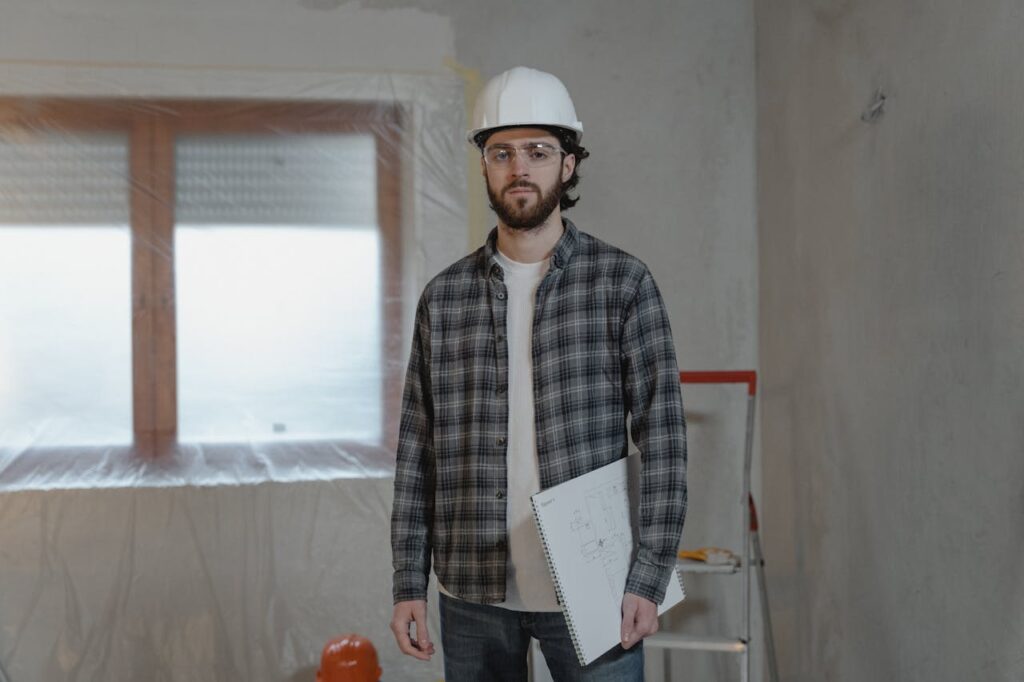
Building a compliant auto repair shop ventilation system in Houston requires careful planning and adherence to multiple layers of regulation. We approach these projects by establishing the foundation first, which means calculating ventilation rates, identifying classified zones, and designing control strategies that meet both mechanical code requirements and safety standards.
The permit pathway involves registering the mechanical contractor through the CE-1308 process, creating an iPermits account for the application, and budgeting for fees that total 2% of job cost plus administrative charges. When plan review is required, we upload documents to ProjectDox and complete assigned tasks within the 180-day permit validity period. We schedule inspections with proper documentation and maintain contractor licensing in good standing to avoid delays or re-inspection fees. For facilities in the Houston nonattainment area, TCEQ air authorization becomes critical, whether through de minimis qualification, Permit by Rule claims, or State Air Quality Permits. We maintain detailed records to demonstrate compliance with VOC limits and emissions inventory requirements that apply to shops generating 10 tons per year or more of volatile organic compounds.
Contact EB3 for expert guidance on auto repair shop ventilation design and permit coordination in Houston.

